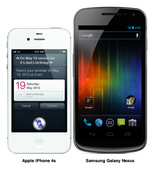According to ZDNet, Adobe will cease development of mobile Flash and focus their resources on HTML5. The following was leaked to ZDNet by sources close to Adobe:
Our future work with Flash on mobile devices will be focused on enabling Flash developers to package native apps with Adobe AIR for all the major app stores. We will no longer adapt Flash Player for mobile devices to new browser, OS version or device configurations. Some of our source code licensees may opt to continue working on and releasing their own implementations. We will continue to support the current Android and PlayBook configurations with critical bug fixes and security updates.
Considering Adobe demoed Wallaby—their tool to convert Flash to HTML5—last October, I think it was apparent to some on the inside that Flash’s days are numbered. Killing off mobile Flash is just the first step towards ending Flash as a browser plugin, while moving to support native apps and HTML5.
Update: Adobe has officially announced the end of mobile Flash on their blog.
About a week ago, Microsoft posted “Future Vision Montage”, outlining what they believe the future of technology will offer us. As could be expected, the future is a dramatic and interactive environment filled with augmented reality. Information is always at your fingertips, literally, since everything mimics the now common touch driven interface.
Interaction designer Bret Victor wasn’t impressed with what he saw, and posted his very interesting perspective of what he feels the future of interaction design will be. Guess what? It isn’t all glass screens.
[…] I think hands are fantastic! Hands make us human! It’s even there in the word — human, man, mankind — manual, la mano, la main. Our hands literally define us.
Hands do two things. They are two utterly amazing things, and you rely on them every moment of the day, and most Future Interaction Concepts completely ignore both of them.
Hands feel things, and hands manipulate things.
His take on the matter is well thought out, and definitely worth a read.
Google has been gunning to compete with Facebook on the social-front, and their most recent attempt, Google+, appears to be their best effort so far. With over 40 million users to date, Google+ has been able to amass a large following in a short amount of time. Their recent launch of Google+ Pages—their version of Facebook for Business—is just another addition to their bag of social tricks.
Problem is, Facebook is approaching 1 billion users, 25-times that of Google+. To continue to grow their users, Google has taken a page from Facebook and has reached out to college students. From BGR:
As a new semester got underway at Ben Gurion University and Tel Aviv University in Israel, students were greeted by an unexpected surprise: a series of booths that served as recruiting stations for Google+. The manned booths offered passers-by a free gift bag packed with goodies if they were willing to sign up for the new social network on the spot, Ynet recently reported. Google’s hired hands helped users create their profiles on the spot, even offering to take playful profile pictures for the university students, which were also printed on stickers and given away for free.
This approach seems very similar to how Google Wallet has been marketed recently, and screams of desperation. As a Google+ user myself, I can think of many different aspects of the service that could convince new users to join, but giving out gift bags is not one of them. I wonder how many fake profiles are being created on campus just so the students can get the free goodies.
It appears HP is leaning towards selling off the webOS unit, instead of keeping it in-house or open sourcing the platform. From Reuters:
Hewlett-Packard Co is evaluating a potential sale of its webOS software platform in a deal that could fetch hundreds of millions of dollars but likely less than the $1.2 billion the company paid for Palm Inc in 2010, said four sources close to the matter.
The article asserts that multiple companies have shown interest in purchasing webOS, with the aim of gaining patents rather than continuing to extend the platform.
Apple iPhone 4S vs Samsung Galaxy Nexus

Screenshot from phone-size.com
Have you ever wondered how different mobile phones compare physically in size? Wonder no more because
phone-size.com now provides you with an easy and interactive way to do so. The site contains nearly 70 different phone models from ten different handset makers, including Apple, Blackberry, HTC, Motorola and Samsung.
My favorite feature is how the site will resize the phones on-screen depending on your screen ratio and diagonal size. I simply selected “16:9” for screen type, entered in the diagonal size of my monitor and voila, the phones scaled to represent their sizes in real life.

